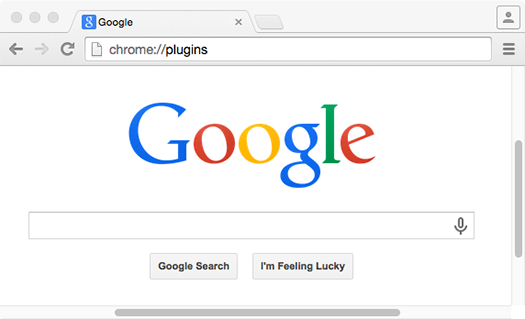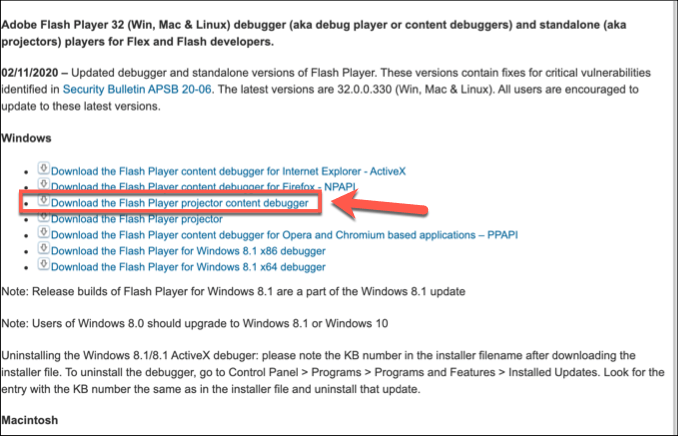- Adobe Flash Player Plugin For Chrome On Mac Kodi Tv 16.1 Free Download Download Kodi Pc 64 Bit Kodi Torrent Search And Download Adobe Flash Player Update For Mac 10.7.5 Adobe Flash Player For Mac El Capitan Download Adobe Flash Player For Mac 10.10 Adobe Flash Player For Mac Book Pro.
- Feb 17, 2020 You may have noticed that though Google Chrome offers native support for the Flash player plugin, but it’s now disabled by default within the browser. Thus if you want to use Flash on Chrome, you must enable Flash Player manually through the Chrome settings. This tutorial will show you how to enable Flash Player on Chrome web browser.
Add new flash file: - navigate to the webpage with some flashes files - click to icon of extension Flash Player + - select on top menu 'Add flash from actual page' - click to blue icon 'add' - if you want can change flash name Play saves flashes: - click to icon of Flash Player + - select on top menu 'My Flash Playlist' - click to blue icon. Until then, however, you can re-enable Flash by going through Chrome's Settings menu. Here's how to do it in two ways, using the official Google Chrome app for Mac and PC. Check out the products.
Best apps live in Setapp
Having been around since 1996, Adobe Flash Player has played a crucial role in the evolution of the web. For the longest time, before HTML5 became truly widespread, it was the only effective way to run multimedia content online, including video, games, applications, audio, and more.
Today, the era of Adobe Flash Player is coming to an end. While the Flash Player 2020 is still supported, Adobe announced back in 2017 that 2020 would be the last year of support for the software. Accordingly, all major browsers, from Safari to Firefox and Chrome, replaced most of Flash Player’s functionality with compatible HTML5 features. What’s more, Microsoft said it would completely remove Flash from its browsers at the end of 2020.
So why has the internet, which benefited so much from everything that Flash had to offer, suddenly turned against it? In a word, it had a lot to do with security issues and the closed ecosystem of Adobe.
Why Is Adobe Flash Player Going Away?
In his 2010 letter, Thoughts on Flash, Steve Jobs outlined his reasons for Apple’s iOS devices not supporting the Flash standard, which arguably greatly accelerated its downfall. Jobs cited poor performance on mobile devices, frequent crashes, high battery consumption, and availability of better open standards (i.e. HTML5) that are able to completely replace Flash.
In reality, security vulnerabilities have plagued Adobe Flash Player throughout its life, and it has been widely reported to be the primary target for hackers trying to exploit those vulnerabilities, which companies producing browsers and operating systems couldn’t fix due to the proprietary nature of Flash.
Having said that, there are still quite a few reasons for why you might want to use Adobe Flash Player. For example, it could still be the only way some legacy media content on the web (e.g. videos, games) is going to play on your Mac. So let’s look at how to enable Adobe Flash Player in Chrome.
How to enable Adobe Flash Player on Chrome
If you need to use Flash Player today, your best bet is to go with Google Chrome. You might be surprised to hear that the Flash plugin is already installed in Chrome, however, it’s turned off by default — you need to turn on Flash in Chrome Flash settings yourself.
So how to allow Flash on Chrome?
Open Google Chrome and go to Settings (⌘ + ,)
Scroll down to “Privacy and security”
Click Site Settings ➙ Flash
By default, there’s a toggle set to the off position that says “Block sites from running Flash (recommended).” Switch it on, so it says “Ask first.”
Now, every time you visit a website that contains something for Flash Player Chrome will ask your permission to play it instead of blocking it. But your settings will only work until you quit Google Chrome. So don’t forget to come back and reset it after.
In case you’re having problems with the Chrome Flash Player, updating Google Chrome could help:
Open Chrome and click on the menu button in the top-right corner
Click Update Google Chrome, if available. Otherwise, you’re currently on the latest version.
Alternatively, visit google.com/chrome and download the latest version of Chrome from there
Remember that Google Chrome will stop the support for the Flash Chrome plugin at the end of 2020, so if you absolutely need to use it, make sure you stop Google Chrome from automatically updating sooner rather than later (and use another browser for day-to-day work). But how do you do that? It’s a bit more technical:
Launch Terminal from your Applications ➙ Utilities folder
Type defaults write com.google.Keystone.Agent checkInterval 0
Press Enter
Quit Terminal and relaunch Google Chrome
Note: This command will stop the general Google Software Update script from working, so none of your Google apps (e.g. Google Drive for Mac) will automatically receive updates.
To undo the change and let the Chrome browser update itself again:
Launch Terminal
Type defaults write com.google.Keystone.Agent checkInterval 10000
Press Enter
Quit Terminal and restart Google Chrome
How to block websites from using Adobe Flash
It’s likely that everyone who needs to run Adobe Flash Player for Chrome right now has a specific use case in mind, such as a retro online game or an old-school website. Practically no one needs to allow Flash in Chrome for all websites. So how do you block specific websites from accessing Flash? Although tedious, it’s fairly easy to do:
Open Google Chrome and visit any website
Click on the padlock icon in the far left of the URL bar
Select the Flash dropdown and choose Block. If you don’t see the dropdown, choose “Site settings” instead, then find Flash in the list and select Block from there.
How to update Adobe Flash Player for Chrome
Most of the time, when you enable Flash in Chrome, it’s going to be up to date. But, occasionally, you could see a Chrome enable Flash error. To resolve it, try updating your Adobe Flash Player Chrome edition first:
Open Chrome
Type chrome://components in the URL bar and hit Enter
Scroll down to Adobe Flash Player
Click “Check for update”
Alternatively, you can simply reinstall your Chrome Flash Player altogether:
Visit get.adobe.com/flashplayer/otherversions
Pick your OS from the dropdown
Select PPAPI as a version
Click Download Flash Player
Find and install the Adobe Flash Player for Chrome in your Downloads folder
Why scan your Mac for Adobe Flash malware?

It’s good to understand that every major browser is disabling the use of Adobe Flash for a reason — there are simply too many security flaws in the software. So if you consciously search for how to enable Flash in Chrome, you’re exposing yourself to some potential risk.
What you definitely need here is a powerful and trusted malware removal software, so that nothing is able to put your Mac or your files in danger. Where do you look for one?
CleanMyMac X is the world’s leading optimizer for Mac. It not only scans your Mac for every known type of malware and keeps its databases up to date but also helps you maintain your online privacy, speeds up your Mac overall, completely uninstalls any intrusive apps, deals with useless extensions, shreds outdate personal files, frees up space, and much more.
To see if any malware has infiltrated your Mac:
Launch CleanMyMac X
Navigate to the Malware Removal tab under Protection
Click Scan
Hit Remove, if any malware was found
How to recover deleted files on Mac
After you learn how to enable Flash on Chrome, you should at least try to prepare for all eventualities. One of which is a possibility of losing some of your files to malware produced by the Adobe Flash Chrome plugin. How do you get those files back?
Disk Drill is a top-notch app for recovering any recently deleted file from your hard drive. It works for unintentionally removed files just as well as for disk utility errors or data corruption, both on your hard drive or any external devices connected to your Mac. Moreover, it features a handy backup functionality (a good habit to have) so you can save your files somewhere safe frequently with 100% recovery rate.
To use Disk Drill:

Launch the app
Connect your external drive or pick the internal driver from the list and click Recover
Wait for the scan to finish and select the files you want to get back
Update Flash Player Mac Chrome
So if you need to use Flash today, having an Adobe Flash Player Chrome plugin is probably your best bet. Just make sure to stop your Google Chrome from updating to keep using Flash past 2020 and install a malware removal app like CleanMyMac X and a data recovery software like Disk Drill beforehand, just in case.
Best of all, CleanMyMac X and Disk Drill are available to you absolutely free for seven days via Setapp, a platform with more than 200 Mac apps for any situation, from bill payments (Chronicle) to extracting files (Archiver) to keeping contacts in one place (BusyContacts). Try them all today at no cost and see for yourself!
Meantime, prepare for all the awesome things you can do with Setapp.
Read on
Sign Up
Contents:
It gradually becomes a common sense that every browser needs to download adobe flash player on Windows 10. You may often have a question: Do I have a flash? Surprisingly, it is not flash player not working concerns you, how to enable adobe flash player for Google Chrome, Microsoft edge, Firefox and even Internet Explorer is what haunts in your mind.
Recently, the flash player is integrated into Google Chrome, Firefox, Microsoft Edge, Opera, etc. You can see this notification while you start the Google Chrome or Microsoft Edge or some other browsers on Windows 10. So you do not need to install flash player. But here an adobe flash player test is available, just hit Test Flash Payer.
But In previous times, you can often run into an error that you cannot perform this action due to the low version of the browser, to do that, please update the flash player Windows 10. As for why you encounter flash player issues, the reason lies in that there is the flash player is responsible for the browser to run, for instance, view multimedia contents and execute applications.
In this way, it is necessary for you to find the flash player version and enable it for Windows 10. Of course, disable the Adobe flash player if you want in some situations.
Furthermore, in some cases, you may also want to get the latest version of adobe flash player for Google Chrome, or Microsoft edge.
How to Enable Windows Flash Player in Web Browser?
Now you would better manage to learn how to download and then enable flash player on Windows 10 manually if the adobe flash player has not come with Google Chrome, Firefox, Microsoft Edge, etc. on that occasion, you can either troubleshoot flash player or update it on Windows 10.
Tips: Since in Firefox and Internet Explorer, you can notice that the flash player is called Shockwave flash, it is no wonder you observe the shockwave flash object flash.ocx in this browser.
Part 1: Enable Flash Player for Google Chrome on Windows 10
Flash Player For Mac Chrome
In this section, in the first place, you are to get down to know about how to activate the adobe flash player on Google Chrome.
1. Open Google Chrome application on your PC.
2. In Google Chrome, click Toolbar and then select Settings from the list.
3. In Google Chrome Settings, scroll down the webpage to locate Advanced.
4. In the Advanced settings, find out Content settings.
It is to control what information websites can use and what content they can show you.
5. Open Content settings and then choose Flash.
6. In Flash settings, under Allow tab, copy and paste the site. And if you have many sites to run flash player, just click Add to add them on the list.
Here you can set to ask for your permission before using flash in Google Chrome on Windows 10.
Under this circumstance, you are qualified to enable and use adobe flash player on Google Chrome as you wish.
Related: How to Update Chrome://Components on Windows 10
Part 2: Enable Windows Adobe Flash Player on Microsoft Edge
It is well known that the embedded-in web browser on Windows 10 is Microsoft Edge. So it may be the hope of many users to update adobe flash player for Microsoft Edge on Windows 10.
Or to fix flash player problems, you can also try the following steps.
1. In Microsoft Edge browser, click the toolbar which shows itself as three dots and then choose Settings.
2. Then in the Settings window, pick out View advanced settings in Advanced settings.
3. Then attempt to switch on Use Adobe flash player.
After that, every time you boot Microsoft Edge, you can see the Adobe flash player is enabled on Windows 10. And if you feel like to disable flash player, make attempt to just switch off this choice – Use Adobe Flash Player.
Related: Microsoft Edge Keeps Crashing on Windows 10
Part 3: Enable Firefox Flash Player on Windows 10
In the same way, it is also feasible for you to get the Adobe Flash Player for Firefox. You may as well to do that if you have Mozilla Firefox installed on Windows 10.
You will obviously see that the flash player is Shockwave Flash rather than the normal Adobe flash player.
1. Turn on Mozilla Firefox.
2. In Firefox webpage, on the top right corner, click Settings image (three lines) and then pick out Add-ons.
3. Then on the right pane, choose Plugins and then set it as Always Active.
And if here you find the Adobe flash player is not working, manage to update it from the official site and then enable it again for Windows 10.
Part 4: Enable Windows 10 Adobe Flash Player for Internet Explorer
For the people who have flash player on Windows 10, you might as well spare no efforts to update the flash player. Once you got the newest version of Adobe flash player, you could also enable it on the browser Internet Explorer.
Here you need to pay attention that the flash player in Internet Explorer is Shockwave Flash Object.
1. Double click the Internet Explorer on your Desktop to turn on it.
2. In Internet Explorer, hit the Settings image and then select Manage add-ons in it.
3. Then under Toolbars and Extensions, locate Shockwave Flash Object and then make sure it is Enabled.
Adobe Flash Player Mac Chrome
Then decide to check if the Adobe flash player is opened by run some actions in Internet Explorer.
To sum up, there is much need for you to sometimes download, update, and then enable Adobe flash player for Google Chrome, Firefox, Microsoft Edge or any other web browsers on Windows 10. You can refer to the ways in this post, it will be helpful for you.
Flash Player Mac Chrome Download

Install Adobe Flash Player Google Chrome
Related Articles:
